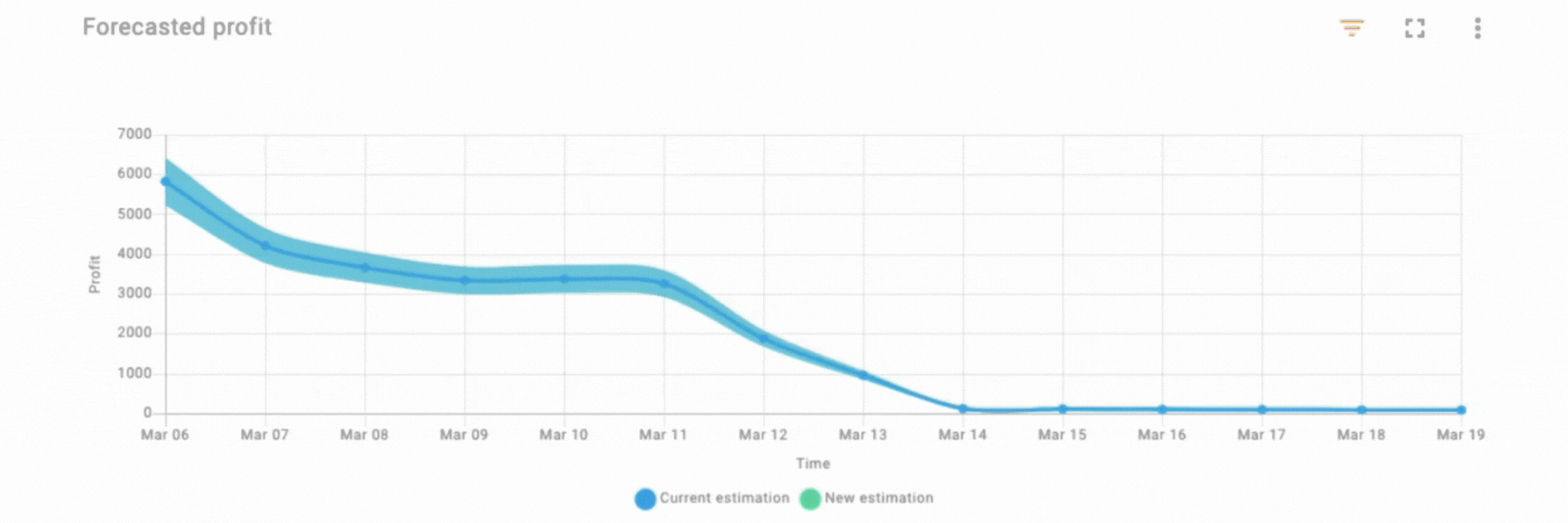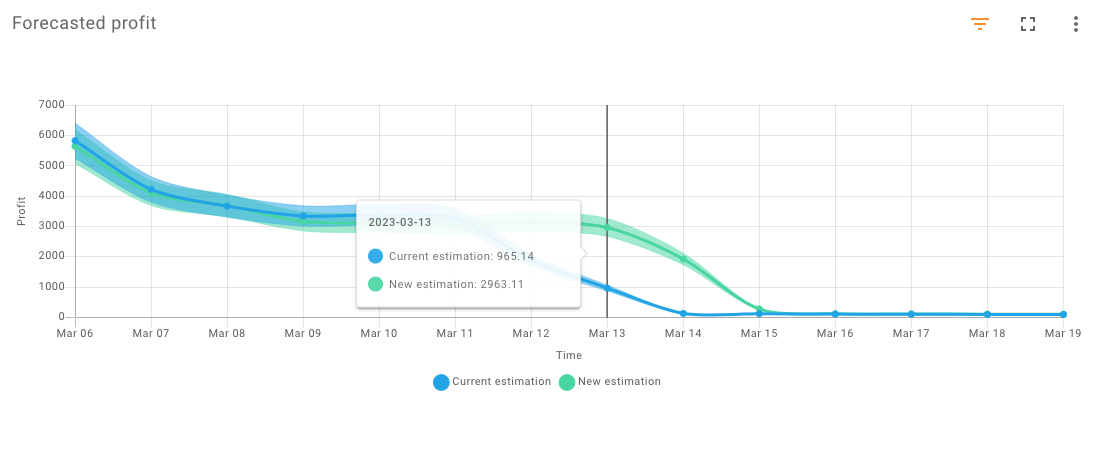Before launching a pricing strategy, conduct a price simulation!
In today’s world, data science and artificial intelligence (AI) have become an integral part of businesses. With the enormous amounts of data being generated daily, businesses can use AI to forecast and simulate prices. Indeed, forecasting demand and price points are essential in identifying market trends, predicting customer demand, and setting prices that can maximize profits.
The question is – who should adopt these methods, why, and when? Keep reading to uncover the benefits of forecasting using AI!
Forecasting Prices using AI
Forecasting prices using AI can help businesses predict future prices with high accuracy. AI algorithms can analyze large amounts of data, including historical prices, market trends, and customer behavior to identify patterns and make predictions. In addition, the algorithms can take into account external factors such as economic indicators, weather patterns, and geopolitical events to make even more accurate predictions.
One of the AI techniques used in price forecasting is machine learning. Machine learning algorithms can learn from historical data and use that knowledge to make predictions. The algorithms can also adapt to changes in the market and adjust their predictions accordingly. Software like Sniffie uses AI to continuously learn and understand from your previous price history to make accurate predictions and suggestions which will give you the most optimal prices.

Sniffie’s Price Simulator allows you to accurately predict future volumes and profits for your products based on their historical performance and seasonal trends.
Conducting Price Simulations with AI
Price simulation involves creating virtual scenarios to test how changes in prices can impact a business’s profitability. AI can help businesses simulate prices and identify the optimal price points that can maximize their profits. Systems can also take into account changes in cost, stock, and price to provide insights on how these factors impact profitability and sales. By analyzing these simulations, businesses can identify potential risks and make informed decisions.
It’s important to have a powerful price history to reap the benefits of forecasting and simulation. The stronger history and data you have, the better the AI functions.
Many businesses benefit from using price simulation tools. Let’s see a few examples:
- Retailers and ecommerce stores: Retailers can use price simulation software/tools to identify the optimal price points for their products. This can help them maximize their profits and stay competitive in the market.
- Airlines: Airlines can use price simulation software/tools to test different pricing strategies and identify the optimal price points for their flights. This can help them maximize their profits and fill more seats on their planes. In addition, airlines commonly use dynamic pricing to reap the maximum benefits of their pricing.
- Hotels: Hotels can use price simulation software/tools to test different pricing strategies and identify the optimal price points for their rooms. This can help them maximize their profits and charge higher for rooms during high seasons, and fill their rooms even during lower seasons.
Benefits of Forecasting and Price Simulation using AI
Forecasting and price simulation using AI can provide businesses with several benefits. These include:
- Accurate predictions: AI algorithms can analyze large amounts of data and identify patterns that humans may miss. Utilizing this methodology can lead to more accurate predictions of future prices, which can help businesses make better decisions about inventory and pricing strategies.
- Cost-effective: AI can help businesses save costs associated with manual forecasting and simulation.
- Risk mitigation: Price simulation can help businesses identify potential risks and make informed decisions to mitigate them. A successful but poorly planned strategy runs the risk of being halted due to insufficient inventory. To avoid customer disappointment, simulate the amount of stock needed to properly measure any pricing campaign.
- Better decision making: Accurate predictions and simulations can help businesses make better decisions that can maximize their profits. With the help of advanced algorithms and machine learning techniques, businesses can now analyze large amounts of data to gain insights into customer behavior, market trends, and more. By using this data, businesses can identify opportunities to increase revenue or reduce costs. Additionally, they can use simulations to test the potential outcomes of different strategies before implementing them, which can help them avoid costly mistakes. By incorporating accurate predictions and simulations into their decision-making processes, businesses can gain a competitive advantage and achieve long-term success.
Conclusion
As the amount of data being generated continues to increase, AI will become an even more essential tool for businesses to stay competitive. By harnessing the power of AI and price history, businesses can gain insights that would be impossible for humans to identify, and make more informed decisions that can lead to better profitability and success.
Using a specific software to simulate prices can be of great value for businesses because it allows them to test different scenarios and identify the optimal price points that can maximize their profits. Using a tool can take into account changes in cost, stock, and price to provide more accurate insights on how these factors impact profitability and sales. Additionally, some tools may be tailored to specific industries, such as retail or airlines, and can provide more industry-specific insights.
FAQ
- Can businesses with limited historical price data still benefit from using AI for price forecasting and simulation, or does the accuracy of predictions depend heavily on the depth and quality of available data?
- While having a strong historical price dataset certainly enhances the accuracy of AI predictions, businesses with limited historical data can still benefit from using AI for price forecasting and simulation. The accuracy of predictions may be affected by the depth and quality of available data, but AI algorithms are designed to adapt and learn from the data they have access to. Therefore, even with limited historical data, AI can still provide valuable insights and predictions to guide pricing strategies.
- Are there specific industries or types of businesses for which AI-based price simulation tools are particularly effective or less effective, and what factors contribute to their effectiveness in these contexts?
- The effectiveness of AI-based price simulation tools can vary across different industries and types of businesses. Factors such as the complexity of the market, the availability of data, and the specific pricing dynamics of each industry can influence the effectiveness of these tools. For example, industries with highly volatile pricing trends or those heavily influenced by external factors may benefit more from AI-based price simulation tools that can quickly adapt to changing conditions. Conversely, industries with more stable pricing dynamics may find AI tools less effective if the data is not diverse or comprehensive enough to capture relevant trends.


